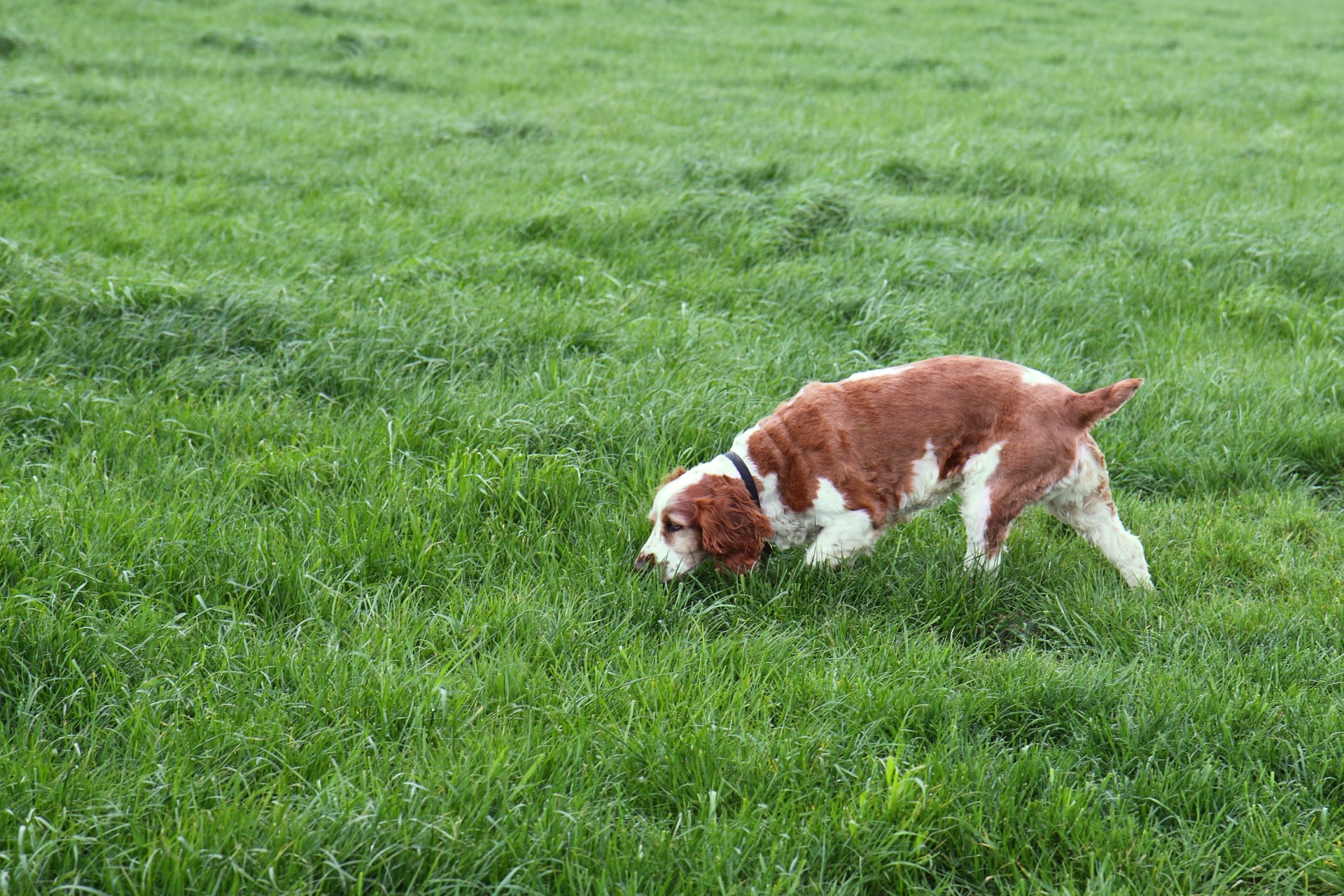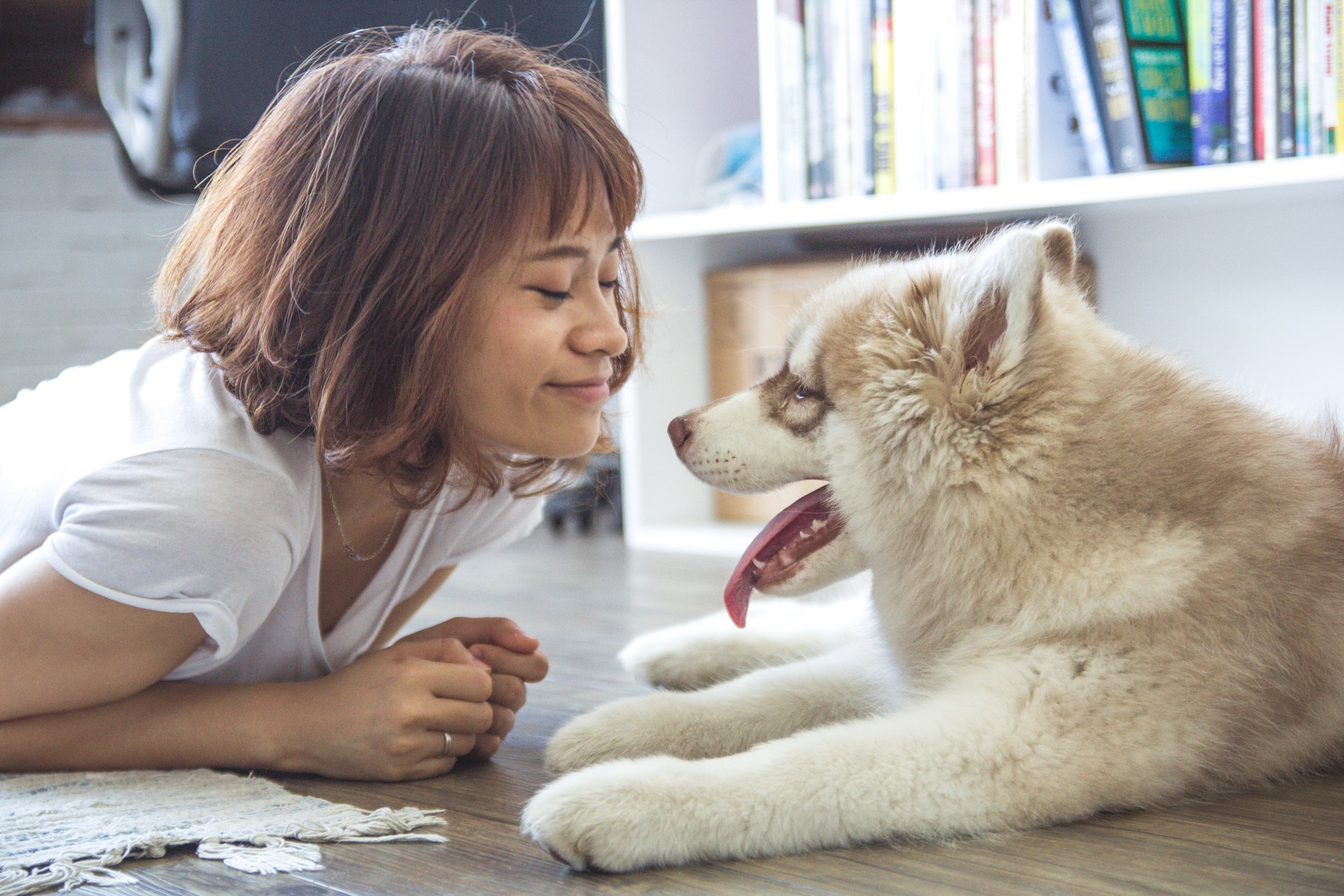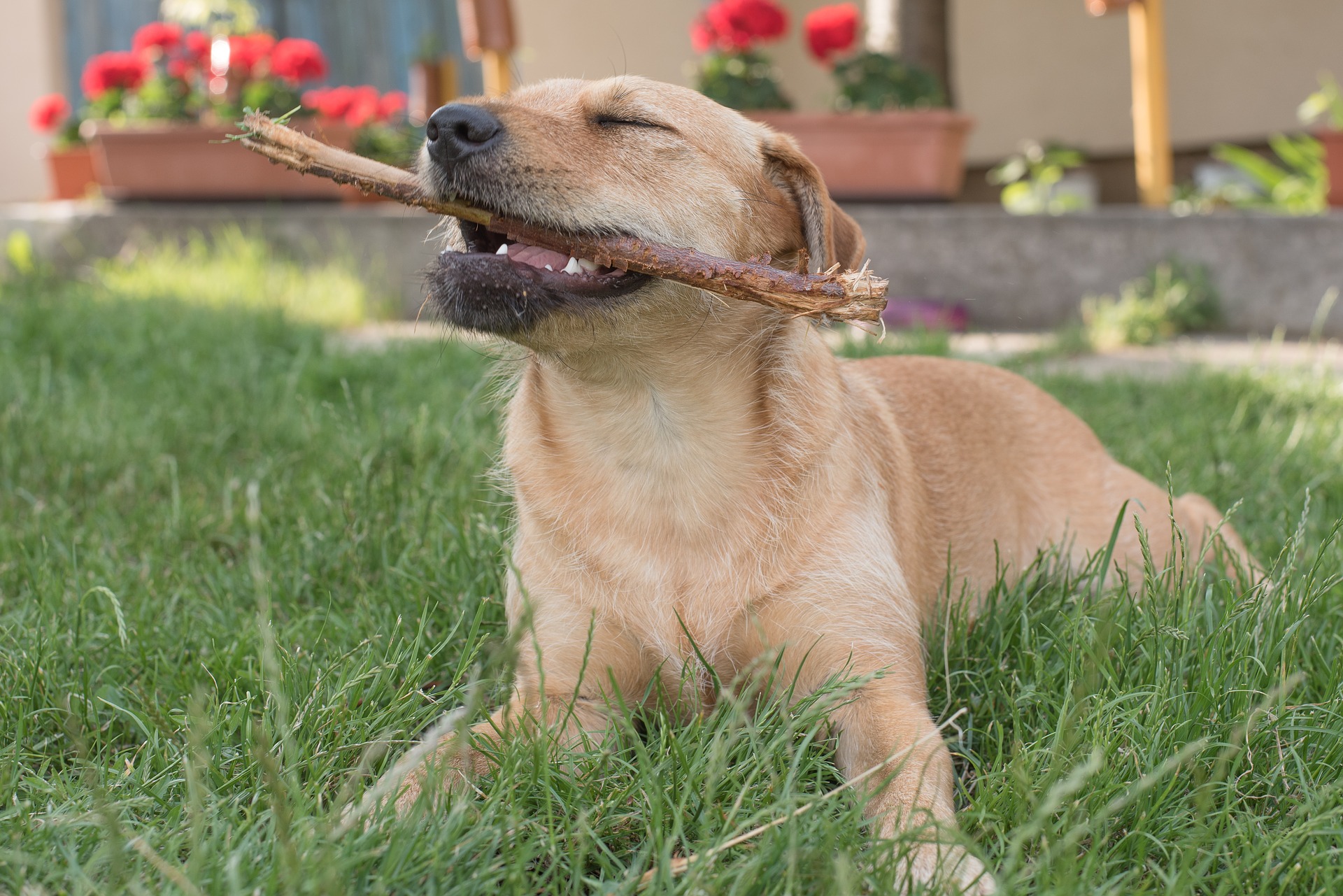If your dog won’t come inside and you’ve literally tried everything to lure them indoors, then this is the most important page you’re ever going to read.
Now, I probably don’t need to tell you how frustrating it is when your dog refuses to come indoors.
Because not only is it annoying trying to call them inside for the 100th time that day. It can also be a huge drain on your time and energy when all you want to do is settle down for the evening.
So in today’s blog post, I want to take you through some of the more common problems that can occur when trying to lure your dog indoors. But before we get to that, I’d highly recommend taking a few minutes to watch the short video’s below from Dan Abdelnoor.
During the videos, Dan reveals why establishing yourself as the pack leader is the missing piece of the puzzle when it comes to teaching your dog effective recall before demonstrating how easy it actually is to get your dog to CHOOSE to follow you with the right training in place.
The 3rd and final video is where Dan reveals 5 step-by-step calming exercises that will ultimately set the foundation for improving your dog’s recall along with a 3 day trial of Dan’s entire membership site over at The Online Dog Trainer.
Watch the video, follow the training Dan recommends, and you’ll see a huge improvement in your dog’s recall a lot sooner than you think.
Video #1: Amazing Recall Demonstration
Video #2: How To Use A Whistle To Improve Your Dogs Recall
(video will open in a new window)
Click Here To Start Your 3 Day Trial Of The Online Dog Trainer
Why Your Dog Doesn’t Want to Come Inside
If you want, you can take a cookie-cutter approach to the problem and skip straight to the solution.
But don’t underestimate the value of understanding what’s behind your dog’s behavior.
Once you know what’s motivating them, figuring out the most effective training technique will be much easier… and make the chances of a successful outcome that much more likely.
Some of the possible reasons for your dog not wanting to come inside include:
They’re Adjusting
If you’ve only recently adopted your dog from a shelter, they’re probably still in the ‘adjustment stage.’ They’re getting used to their new home, their new surroundings – even you.
If they spent most of their previous life outdoors, it’s likely they’ll feel more comfortable and secure in the yard than in the house, at least for now.
It’s in Their Nature
Some breeds are naturally more independent than others.
Hounds and livestock guardians, for instance, were bred to work away from their owners. They were expected to work outdoors and to make their own decisions without checking in anyone first.
If your dog has that kind of attitude hardwired into their brains, ignoring your calls is second nature to them.
The Yard Provides Positive Reinforcement
Some dogs don’t like to move from the sofa. A nice cozy bed, a warm blanket, and a bowl full of treats is all the positive reinforcement they need.
Other dogs are more adventurous. They love to explore, to feel the wind in their coats.
If your dog gets more positive reinforcement from chasing leaves and sniffing trees in the yard than they do from anything else. Having to head indoors is going to feel like a punishment.
However, if your dog gets lots of positive reinforcement from the yard but none from your home, then you’ve got a serious problem.
If your house is too hot, too cold, too noisy, or too full of boisterous kids, it’s not surprising they feel happier in the yard. And if you greet them with a bath or a scolding when they do eventually make it inside, it’s not going to do much to change their mind.

It’s a Habit
Dogs like routines, and they pick up habits faster than you can count to three.
If they’ve got used to spending most of their day outside, they probably see no reason to break the habit by heading indoors.
They’ve got their favorite sleeping spots, their food and water are to hand, there’s plenty of places to dig, chew, and make merry. Considering all that, is there any wonder they decide to stay?
They Have a Health Issue
It may seem a tenuous link, but health issues can sometimes be to blame for your dog’s behavior.
If they’ve only recently started ignoring your call or if you’ve noticed any other changes (lethargy, a change in appetite, etc.). It’s worth getting them checked over by a vet.
They’re On Duty
Some dogs can get carried away with their protective instincts. If they feel it’s their duty to protect you, your house, and your family from intruders. They’re not going to give up their lookout post easily.
By asking them to come inside, you’re asking them to step down from duty – and what conscientious guard dog is going to do that?
They’ve Got a Poor Recall
If your dog hasn’t been trained to come when called, you can’t really expect them to. You might know what you mean when you call them, but they haven’t got a clue.
If they’ve been trained but have been punished after responding to a call in the past. They’re unlikely to tempt fate by responding in kind again.
(video will open in a new window)
What To Do When Your Dog Won’t Come Inside
Now you know what might be behind your dog’s behavior, it’s time to start working on a fix.
If you’ve ruled out the possibility of a health issue, get to work on these tried and tested tactics:
Get Some Exercise
Giving your dog the freedom of the yard is great, but it’s not a substitute for structured exercise.
Walking your dog is the only way to make sure their exercise needs are met. If they’ve still got energy to spare come bedtime, they’re going to feel far less inclined to head indoors than otherwise.
While you’re at it, make sure they’re getting plenty of mental stimulation as well.
Interactive toys are great, but indoor training sessions and one-on-one games shouldn’t be forgotten either. As well as creating positive associations with being inside, they’ll do wonders for your bond.
Related Post: Why Does My Dog Run Away From Me

Don’t Underestimate Them
Dogs aren’t stupid. If you try luring them inside with a treat before slamming the door behind them, they’ll soon cotton on.
Once they do, you’ll be left with a dog that will only come inside with the promise of a treat…
…Or one that sees the treat as a trap and refuses to take it. Either way, the trust is gone.
That doesn’t mean treats can’t be effective. You just need to change how you use them.
When your dog’s playing in the yard during the day, toss some treats to the ground whenever they approach the door. Sit down and let them eat the treats. Keep the door open so they don’t feel trapped.
Keep practicing. Eventually, your dog will start coming in of their own accord to sniff out the treats. Once that happens, you’re on the home run.
Break the Negative Associations
If you’ve taken to dragging your dog into the house by the collar as a last resort, I get it. But trust me, it’s not helpful in the long run.
Dogs learn through associations. When something happens often enough, it doesn’t take them long to start connecting the dots.
Once they learn that you opening the door to call them is swiftly followed by being dragged somewhere they don’t want to go, they’re going to start trying to bolt whenever you approach.
So break the associations and surprise them.
Next time you call them in for the night, pop on their leash and take them for a quick walk instead. Follow the walk with some treats before heading indoors for more treats and a heap of praise.
By swapping the negative associations with positive ones, you’ll be moving one step closer to a successful outcome.
Create a Welcoming Environment
Some dogs don’t care about how hot, cold, noisy, or quiet a house is. But others are way more sensitive than we give them credit for.
Try to make your house as comfortable and rewarding an experience as you can. If your dog reacts to loud noises, use white noise as a muffler.
Keep the house at an even, comfortable temperature. If your kids start getting too boisterous around your dog, tell them to cool it.
Setting up a crate or creating a safe spot away from any distractions or interruptions can also go a long way to making your dog feel more comfortable.

Spend More Time With Them
Make it your mission to spend as much time with your dog in the yard as possible. Keep a bag of treats to hand and offer them a reward whenever they come close.
Having this ‘check-in’ time during the day will improve your bond and teach your dog the value of sticking by your side… even if that side is packed with treats!
Forget the Recall… For Now
If your recall has stopped working or your dog has come to think of it as a poisoned chalice. Leave it at the door for now and find an alternative way of grabbing your dog’s attention.
If they love playing with a Kong, stuff it with their favorite treats, stick it on the end of a flirt pole, and encourage them to chase it around the yard.
Once you’ve got their undivided attention, head indoors to continue the fun. Once you’re inside, carry on playing for long enough that your dog doesn’t think of the treat as a trap.
Train Them in the Recall Cue
If your dog has never learned a recall cue, it’s time to teach them.
Next time you’re playing outside, start introducing the come command. By incorporating it into their play, they’ll learn to associate it with positive things.
Use a friendly, excited tone and back away from them slightly as you use it. When they take a step toward you, reward them.
Keep practicing. Each time you issue the command, back away a little bit more. Avoid the temptation to go too far, too soon – baby steps are the key to success.
Once they learn that coming when called means something marvelous is on the way, start moving in the direction of the house.
Keep rewarding them each time they come, being careful to mix things up – for each time you use the command to lead them indoors, use it to lead them to another part of the yard.
By doing that, they’ll be less inclined to start developing any negative associations.
Related Post: Recall Training Puppies – How To Teach A Puppy To Come

Make the Yard Less Interesting
While you don’t want to remove the source of their pleasure, there are certain things you can do to make your yard less distracting.
Number one? Remove wildlife.
Fill up any cracks, secure your fence, and tell the neighbor’s cat they’re not welcome anymore. With fewer things around to distract them, your dog will be more inclined to focus their attention on you.
Lead Them Away From The Doorway
Once you’ve managed to get your dog inside, steer them away from the doorway.
Sticking around will remind them of what’s on the other side and encourage them to beg to go back outside. Lead them away to another room and play with them for long enough to make any thoughts of the outside leave their heads.
Final Thoughts
By now, you should hopefully have a good idea of how to encourage your dog to come inside.
But make no mistake. None of the solutions I’ve mentioned are going to produce instant results.
Why?
Because as much as we wish there was, there’s no such thing as a magic fix.
This is going to take time, effort, and patience. But providing you’re consistent, you’ll get there in the end.
And once your dog starts coming each time they’re called, all that effort will have been worth it.
(video will open in a new window)

